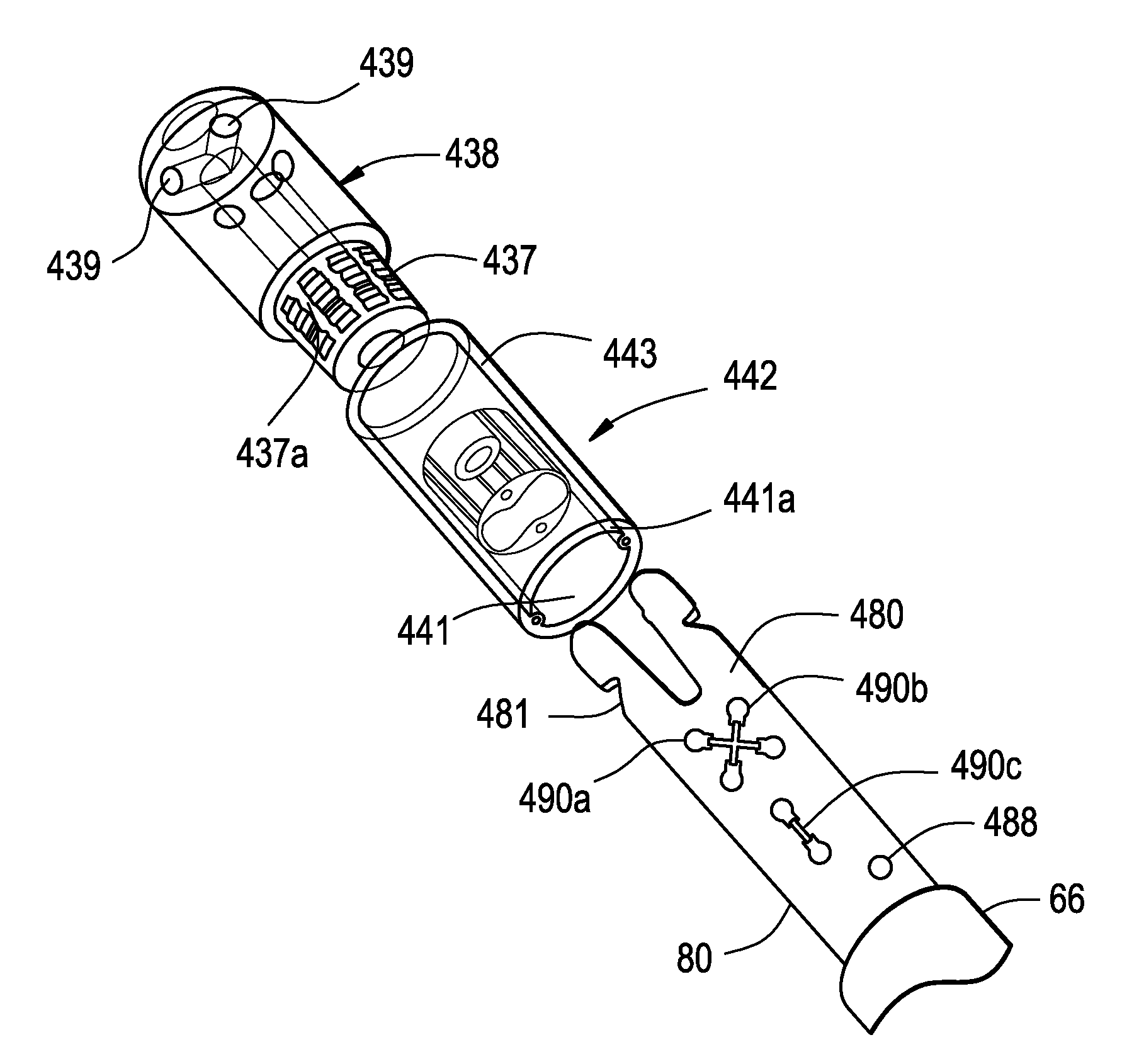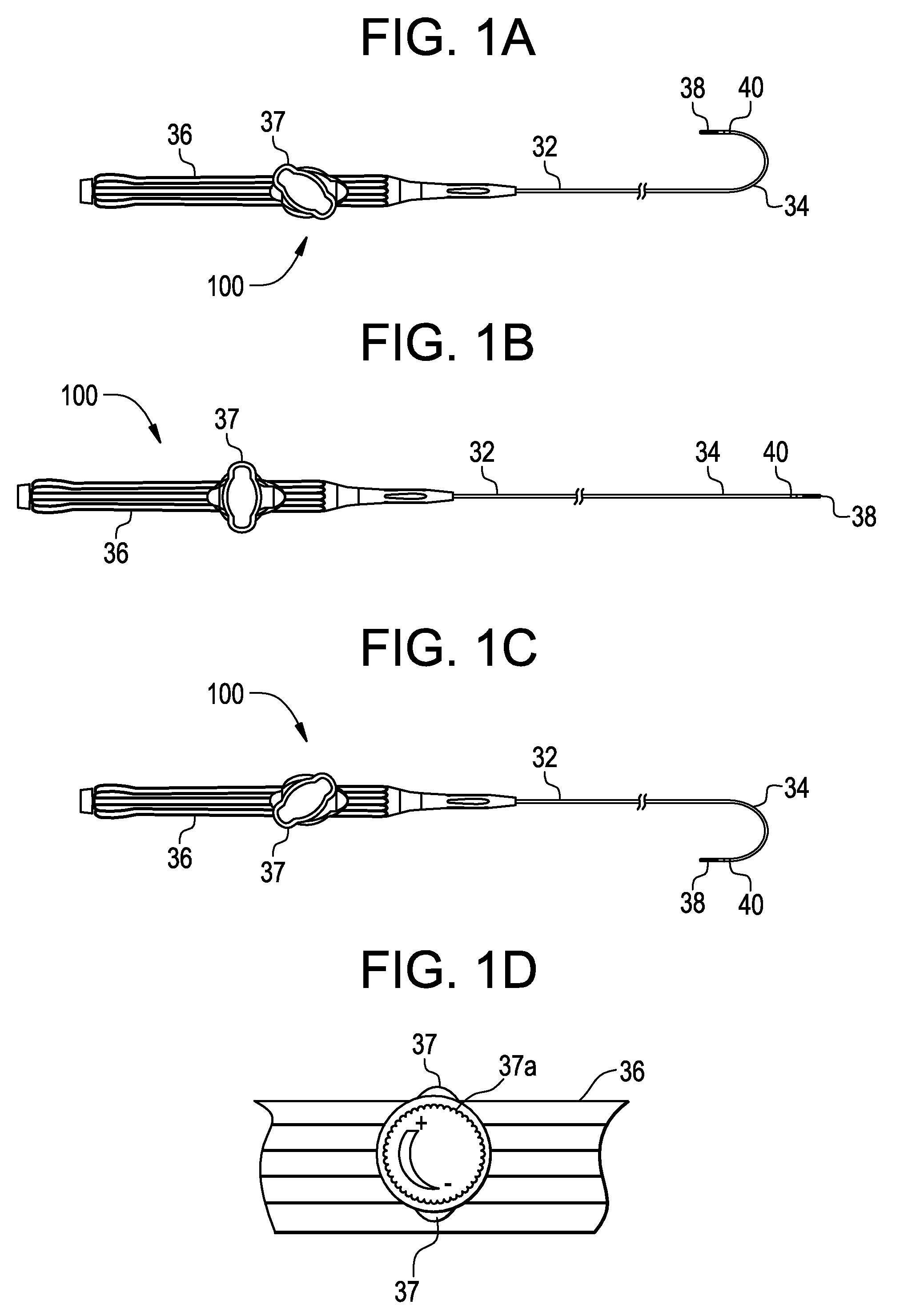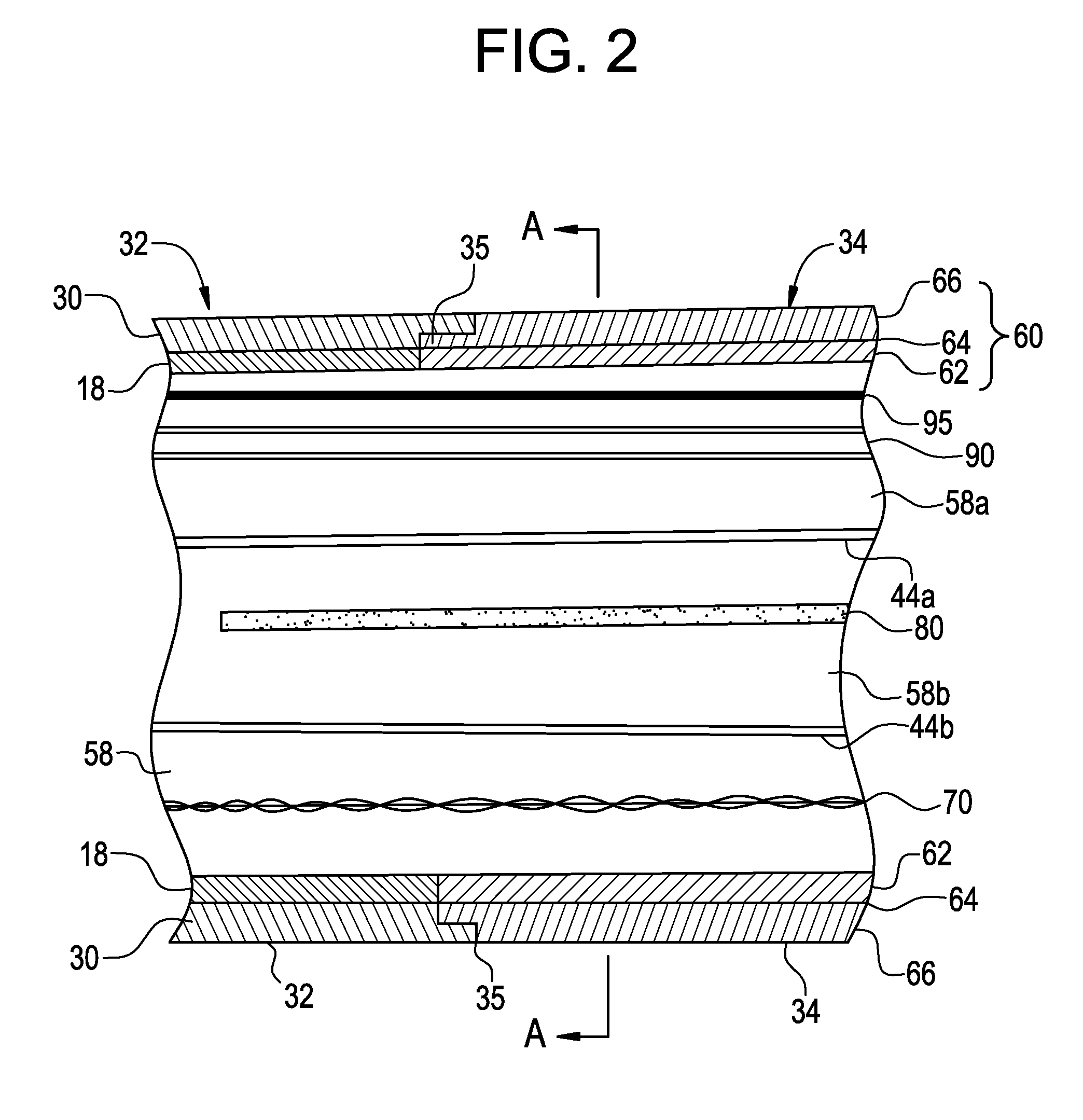Force-sensing catheter with bonded center strut
a force-sensing catheter and center strut technology, applied in the field of medical devices, can solve the problems of not providing a means for accurately providing force sensing and no teaching with respect to sensing force at the tip of the catheter
- Summary
- Abstract
- Description
- Claims
- Application Information
AI Technical Summary
Benefits of technology
Problems solved by technology
Method used
Image
Examples
Embodiment Construction
[0038]FIGS. 1A-C depict a planar view of an embodiment of a deflectable catheter in accordance with the present invention. As shown in FIG. 1B, a preferred catheter 100 comprises an elongated tubular catheter body having a proximal section 32, a distal tip section 34 and a control handle 36 at the proximal end of the proximal section 32. Tip electrode 38 and optional ring electrode 40 are placed at or near deflectable distal tip section 34 so as to provide a source of ablation energy if the desired device is an RF ablation catheter or for receiving electrical signals if the catheter is a diagnostic EP mapping catheter. Control handle 36 may be one of many designs capable of placing a pulling force on puller wires used to deflect the deflectable tip section 34. Preferably, control handle 36 is the handle used in the Biosense EZ-Steer bidirectional family of products which control handle is depicted in FIGS. 1A-C. The “rocker” type lever 37 pulls one of two puller wires to deflect the...
PUM
 Login to View More
Login to View More Abstract
Description
Claims
Application Information
 Login to View More
Login to View More - R&D
- Intellectual Property
- Life Sciences
- Materials
- Tech Scout
- Unparalleled Data Quality
- Higher Quality Content
- 60% Fewer Hallucinations
Browse by: Latest US Patents, China's latest patents, Technical Efficacy Thesaurus, Application Domain, Technology Topic, Popular Technical Reports.
© 2025 PatSnap. All rights reserved.Legal|Privacy policy|Modern Slavery Act Transparency Statement|Sitemap|About US| Contact US: help@patsnap.com



